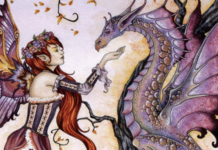
 The Path of Druidry: Walking the Ancient Green Way, by Penny Billington
The Path of Druidry: Walking the Ancient Green Way, by Penny Billington
Llewellyn Worldwide, 978-0-7387-2346-4, 384 pp, 2011
When dealing with the topic of Druidry there are inherent dangers. One can present a scholarly look at the few remaining historical references to the Druids and the speculation which has raged around them, one can present romanticized imaginings and call them “ancient secrets passed down in an unbroken succession through the ages”; or one can simply say “Here is what we know and this is how we relate to it in a vastly different world.” The latter is the method I personally prefer, it allows one to start from a solid base and then modify as required by the needs of the 21st century.
The approach to Druidry which Billington espouses is that of a living, evolving religion, and that seems eminently reasonable and practical to me. It is one which will allow the individual to discover the truths which work for them, while still providing a base of knowledge which will be acceptable to many others who follow a similar path. Each individual, ultimately, follows a unique path and has a unique perspective on religion and the religious experiences encountered along that path.
Considering that what is known about historical Druids is speculation by classical writers who, often enough, had never actually encountered a Druid in real life (many of them nor putting their ideas down until centuries after the destruction of the Druids and their verbal teachings), it is not surprising that there are many ideas about what they believed and how they related to the world around them. Any attempt to do more than speculate is doomed to failure, I fear. In addition, our existence is very different from that of the Celtic peoples who gave birth to the Druids. Our wealth lies not in cattle and our own reputation, but in concepts of money and ownership.
Billington takes a thoroughly rational approach to the study of Druidry. In keeping with traditional training, she insists that the individual must be properly grounded and present in the world in which we all live, there is no emphasis on removing yourself from the concerns of the mundane world. Such concerns are, in her understanding, uniquely necessary to the ability to function as a Druid in the here and now. She expects the reader to take many possible opportunities to react to the physical world by taking a walk as much as by meditating on it.
If you come to this book expecting to be led by the hand through training and on to being a Druid you will be disappointed. Druidism is an on-going journey, not a destination. Her approach shows how beautiful that journey may be.
This book takes the reader through the journey on several levels, exposing mythic connections; connections to the natural world and devotional applications. The chapters include study breaks, visualizations and some basic correspondences. Mostly, however, the book stresses the fact that Druidry is an individual religion – not that groves don’t exist or that they are a bad idea, but that each Druid relates to the universe as an individual. Billington strives to allow her readers to make valid connections with the wider Druid world in ways that most Druids would find acceptable while still encouraging their individuality and personal experiences.
Billington has presented a book filled with stimulating ideas and thoughts which should promote discussion and contemplation within.
Image credit: Romanito.








